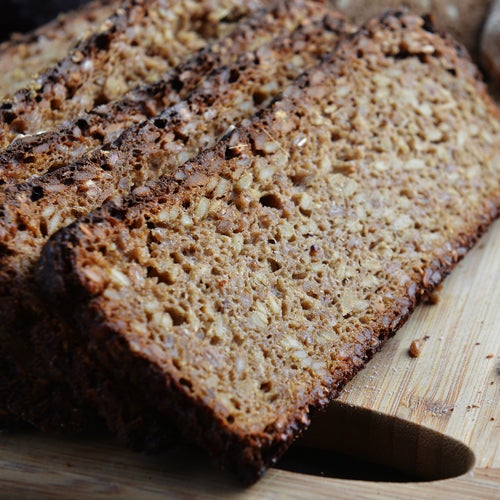What is Sprouted Wheat Bread?

Eat clean and get lean with our dietitians, Erin Macdonald and Tiffani Bachus. Find out when their new course, A Whole-Life Guide to Lasting Weight Loss, launches. Register now!
Sprouted wheat and whole-wheat breads are both made with whole-wheat kernels, meaning the wheat’s nutrient-rich germ, endosperm and bran are left intact. However, sprouted grain bread is made from whole kernels that have begun to sprout, a process that activates essential enzymes, making the grains easier to digest and increasing their levels of antioxidants, fiber and vitamins. Additionally, sprouted grain breads are often made with a variety of sprouted grains, such as barley, oats and millet, as well as sprouted legumes, such as lentils. By doing so, manufacturers can custom-build breads to provide a complete set of protein-building amino acids based on their sprouted ingredients, making them an excellent option for vegetarians.
However, the argument for sprouted grains does have its critics, as some claim consumers are paying more for essentially the same grain – and to be fair, it’s still unclear as to whether these nutritional advantages last throughout the baking process. Our advice? Both are nutritious whole-grain options, so opt for whichever taste you prefer.
See our Guide to Whole Grains to learn more about healthy grains.
Registered dietitians Tiffani Bachus and Erin Macdonald are the co-founders and creators of URockGirl.com, a website dedicated to promoting wellness and a healthy, balanced lifestyle.